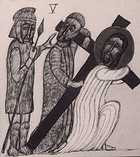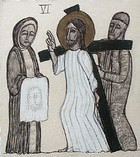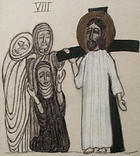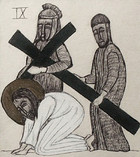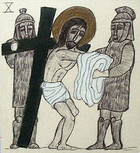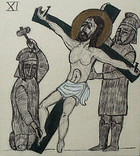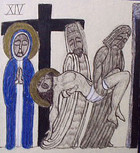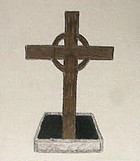Via Dolorosa
Shrines with Stations of the Cross gained popularity in the late Middle Ages, offering devout Christians the spiritual benefits of re-enacting Christ’s walk to his crucifixion without having to make a costly and perilous pilgrimage to Jerusalem to process along the true Via Dolorosa (the Way of Sorrow). The number and choice of moments on the road to Calvary to be remembered with prayers and hymns in this traditionally Roman Catholic form of devotion varied down the centuries until the Vatican established a canon of fourteen stations in 1731.
The devotional cycle begins with meditations on Christ’s condemnation by Pilate and his acceptance of the cross and ends with his deposition from the cross and entombment. Along this Way of Sorrow, Christ stumbles once; encounters his mother Mary; gets help to bear the cross from Simon of Cyrene; leaves Veronica an image of his holy face on a cloth; stumbles a second time; speaks to the women of Jerusalem; and stumbles a third time before he is stripped of his clothes and nailed to the cross.
The Stations of the Cross challenge the discipline and devotion of the sacred artist, requiring that a unity of concept and design be carried through fourteen separate images. It is not uncommon nowadays for a final, fifteenth station to be added to the traditional canon, celebrating the Resurrection of Christ. The Stations of the Cross usually take the form of artistic markers, spaced at intervals along the side aisles of a church nave. The mixed-media work shown here, following the model of fifteen Stations, was conceived as a single piece for private devotion using only a black-ink ballpoint pen, a soft and hard lead pencil, and gold, blue, white and black Prisma color pencils.


